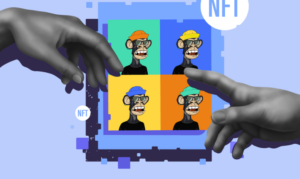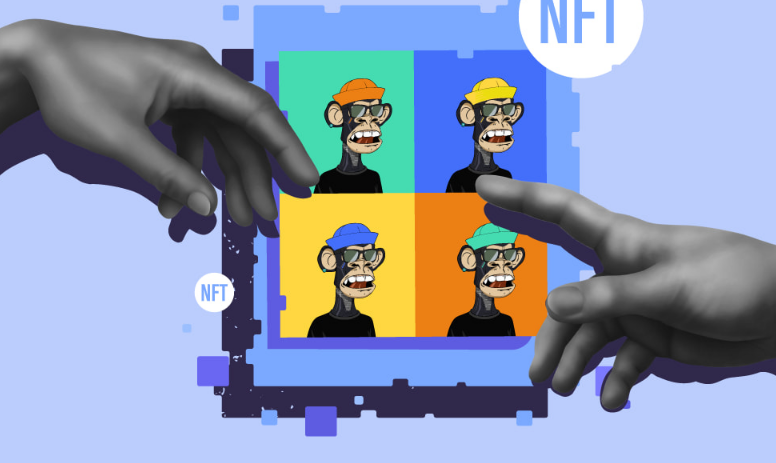How to Create an NFT Marketplace Using Blockchain Technology
Non-Fungible Tokens (NFTs) have transformed the digital asset industry by enabling unique ownership of art, music, virtual real estate, and more. Building an NFT marketplace allows users to create, buy, sell, and trade NFTs seamlessly on the blockchain.
This guide outlines the essential steps, technologies, and security considerations for developing a scalable and secure NFT marketplace.
1. Understanding NFT Marketplaces
An NFT marketplace is a decentralized platform where users can list, buy, and sell NFTs. These digital assets are stored on a blockchain, ensuring transparency, security, and immutability.
Key Features of an NFT Marketplace
✅ NFT Minting: Users can create NFTs from digital content.
✅ Smart Contracts: Enable secure transactions and enforce ownership rules.
✅ Wallet Integration: Users connect crypto wallets to store and trade NFTs.
✅ Auction & Fixed Price Listings: Different selling options for NFTs.
✅ Royalties & Creator Rewards: Smart contracts ensure creators receive royalties on resales.
Popular NFT marketplaces include OpenSea, Rarible, Foundation, and LooksRare.
2. Choosing the Right Blockchain for Your NFT Marketplace
Selecting a blockchain network is crucial for scalability, transaction fees, and interoperability.
Popular Blockchain Choices for NFTs:
| Blockchain | Consensus | Key Features |
|---|---|---|
| Ethereum | Proof of Stake (PoS) | Most widely used, supports ERC-721 & ERC-1155. |
| Binance Smart Chain (BSC) | PoS | Low fees, faster transactions. |
| Polygon | PoS | Ethereum Layer 2 scaling, lower gas fees. |
| Solana | Proof of History (PoH) | High-speed transactions, low costs. |
| Flow | PoS | Optimized for NFTs, used by NBA Top Shot. |
Ethereum remains the most popular choice, but Solana and Polygon offer faster and cheaper alternatives.
3. Key Components of an NFT Marketplace
To build a fully functional NFT marketplace, you need the following components:
a) Smart Contracts for NFT Creation & Transactions
NFTs are minted and managed through smart contracts.
🔹 Standards:
- ERC-721 (Ethereum, BSC, Polygon): Standard for unique NFTs.
- ERC-1155: Supports both fungible and non-fungible assets.
- Solana SPL Tokens: Used for NFTs on Solana blockchain.
🔹 Tools:
- Solidity (Ethereum, BSC, Polygon).
- Rust (Solana).
b) Decentralized Storage (IPFS & Arweave)
NFT metadata (images, videos) needs secure and permanent storage.
🔹 Options for NFT Storage:
✅ InterPlanetary File System (IPFS): Decentralized content storage.
✅ Arweave: Blockchain-based permanent data storage.
✅ Filecoin: Decentralized cloud storage.
c) Wallet Integration (MetaMask, Phantom, WalletConnect)
NFT marketplaces require wallet support for transactions.
🔹 Popular Crypto Wallets:
✅ MetaMask: Works with Ethereum & Polygon.
✅ Phantom Wallet: Ideal for Solana-based NFTs.
✅ WalletConnect: Connects multiple wallets.
🔹 Implementation:
Use ethers.js or web3.js for Ethereum wallet integration.
d) Marketplace Features
Your NFT marketplace should include:
✅ NFT Listing & Search Functionality.
✅ Filters (by price, category, creator).
✅ User Profiles & Collection Pages.
✅ Smart Contract-Based Royalties for Artists.
4. Step-by-Step Guide to Building an NFT Marketplace
Step 1: Define Your NFT Marketplace Model
Choose the type of NFT marketplace:
✅ Open Marketplace: Anyone can list NFTs (e.g., OpenSea).
✅ Curated Marketplace: Only verified creators can sell (e.g., SuperRare).
✅ Industry-Specific Marketplace: Focused on a niche (e.g., gaming NFTs).
Step 2: Develop Smart Contracts for NFT Minting & Trading
Create Solidity smart contracts for Ethereum-based NFTs.
🔹 Example ERC-721 Smart Contract:
✅ Deploy on Ethereum using Hardhat or Remix.
✅ For Solana, use Rust and the Metaplex protocol.
Step 3: Implement Web3 and Wallet Integration
Use ethers.js or web3.js for connecting the front end to blockchain wallets.
🔹 Example MetaMask Wallet Connection:
✅ Ensure smooth user authentication with WalletConnect.
Step 4: Build the NFT Marketplace Frontend
The UI should include:
✅ NFT Listing Pages.
✅ Auction & Fixed Price Sales.
✅ Filters & Search Features.
🔹 Recommended Tech Stack:
- Frontend: React.js, Next.js.
- Blockchain Interaction: ethers.js, web3.js.
- Backend: Node.js, Express.js, MongoDB (for user data).
Step 5: Enable NFT Buying, Selling, and Auctions
- Fixed Price Sales: Direct NFT purchases.
- Bidding System: Auctions using smart contracts.
🔹 Example Smart Contract for an NFT Auction:
Step 6: Implement Royalty Mechanisms
Creators should earn royalties on secondary sales.
🔹 Use EIP-2981 (Ethereum Royalty Standard).
✅ Ensure automatic royalty payments on resale.
Step 7: Secure and Test the NFT Marketplace
🔹 Security Best Practices:
✅ Audit Smart Contracts (CertiK, OpenZeppelin).
✅ Prevent Reentrancy Attacks & Overflows.
✅ Use HTTPS & DDoS Protection for the front end.
🔹 Testing Tools:
✅ Hardhat, Truffle (Ethereum).
✅ Metaplex (Solana).
5. Future Trends in NFT Marketplaces
🚀 Cross-Chain NFT Marketplaces: Supporting multi-blockchain trading.
🚀 NFT Fractionalization: Dividing NFTs into smaller tradable shares.
🚀 AI-Powered NFT Pricing: Automated price predictions.
🚀 NFT Lending & Collateralization: Using NFTs as DeFi loan collateral.
Conclusion
Building an NFT marketplace requires blockchain integration, smart contracts, a user-friendly UI, and secure storage solutions. By following best practices in smart contract development, wallet connectivity, and decentralized storage, developers can create scalable and secure NFT platforms that attract creators and traders alike. 🚀

Also Read :
